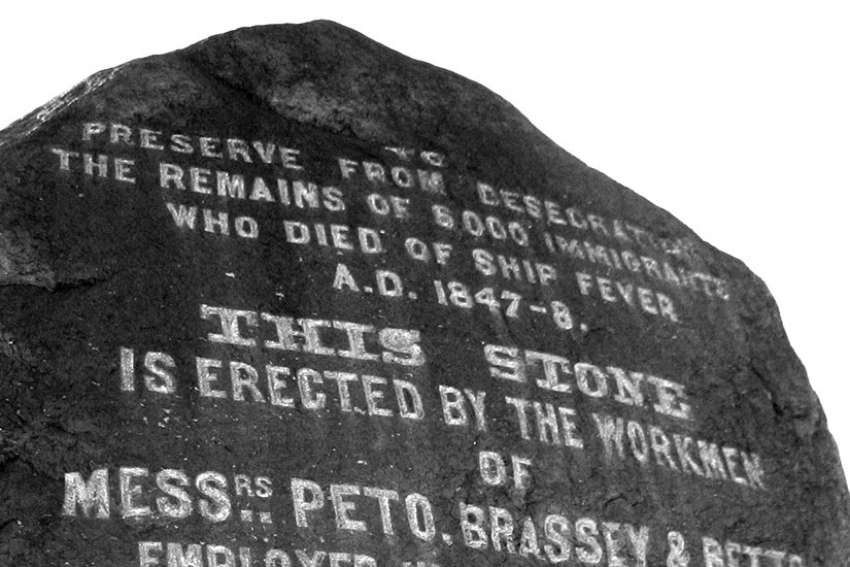Shortly after the ice left the St. Lawrence River in 1847, ships packed with the starving and sick from Ireland began to dock in Montreal. Coffin ships, they called them, because thousands of famine refugees who boarded in Ireland contracted typhus and died at sea or in fever sheds after reaching Canada.
Today, the remains of 6,000 of those poor souls fill a mass grave on land near Montreal’s Victoria Bridge. It is North America’s largest burial site for famine refugees, sacred ground that should be respected.
So Montreal’s Irish community is understandably livid that Hydro-Quebec bought the land to build an electrical sub-station atop the graves. They feel betrayed that detailed plans for a memorial park — plans supposedly backed by all level of politicians — were secretly undermined. And they are rightly mystified that, of all years, this callous affair is unfolding as Montreal honours its heritage during the city’s 375th anniversary and as Canada gets set to turn 150.
The tragedy of 1847 may be the most dramatic chapter in Montreal history. To treat those events with anything but reverence is shameful. More than 100,000 starving Irish were shipped, often forcibly, that year to Canada. Some 20,000 died at sea or at ports in Atlantic Canada, along the St. Lawrence and in Toronto. The largest Irish mass graves outside of Ireland are in Canada. None is bigger than the one now facing desecration in Montreal that was dug during the Summer of Sorrow.
Death that summer found more than the Irish. Members of the Sisters of Charity, the order founded a century earlier by St. Marguerite d’Youville, accompanied people of all backgrounds to the fever sheds, feeding and nursing the sick and dying. The mayor was among the many caregivers who contracted typhus and died.
If Hydro-Quebec had bought the land ignorant of its significance, the faux pas might be easily fixed and forgiven. But that clearly is not the case. The site has been marked for 158 years by a 28-tonne black rock — The Irish Commemorative Stone — that was dragged in 1859 from the St. Lawrence by Irish construction workers. They engraved the rock — “To preserve from desecration the remains of 6,000 immigrants who died of ship fever A.D. 1847-48” — and every year, to honour their ancestors, a couple hundred people hold a “walk to the stone” from a nearby Catholic Church.
Montreal Mayor Denis Coderre says he supports a memorial park and talks vaguely of making it happen. That’s not enough. The sale of this land needs to be blocked.
An electrical sub-station is easy to move. Those 6,000 Irish souls should be left to rest in peace and the saga of their tragic ordeal needs to be respectfully preserved.


